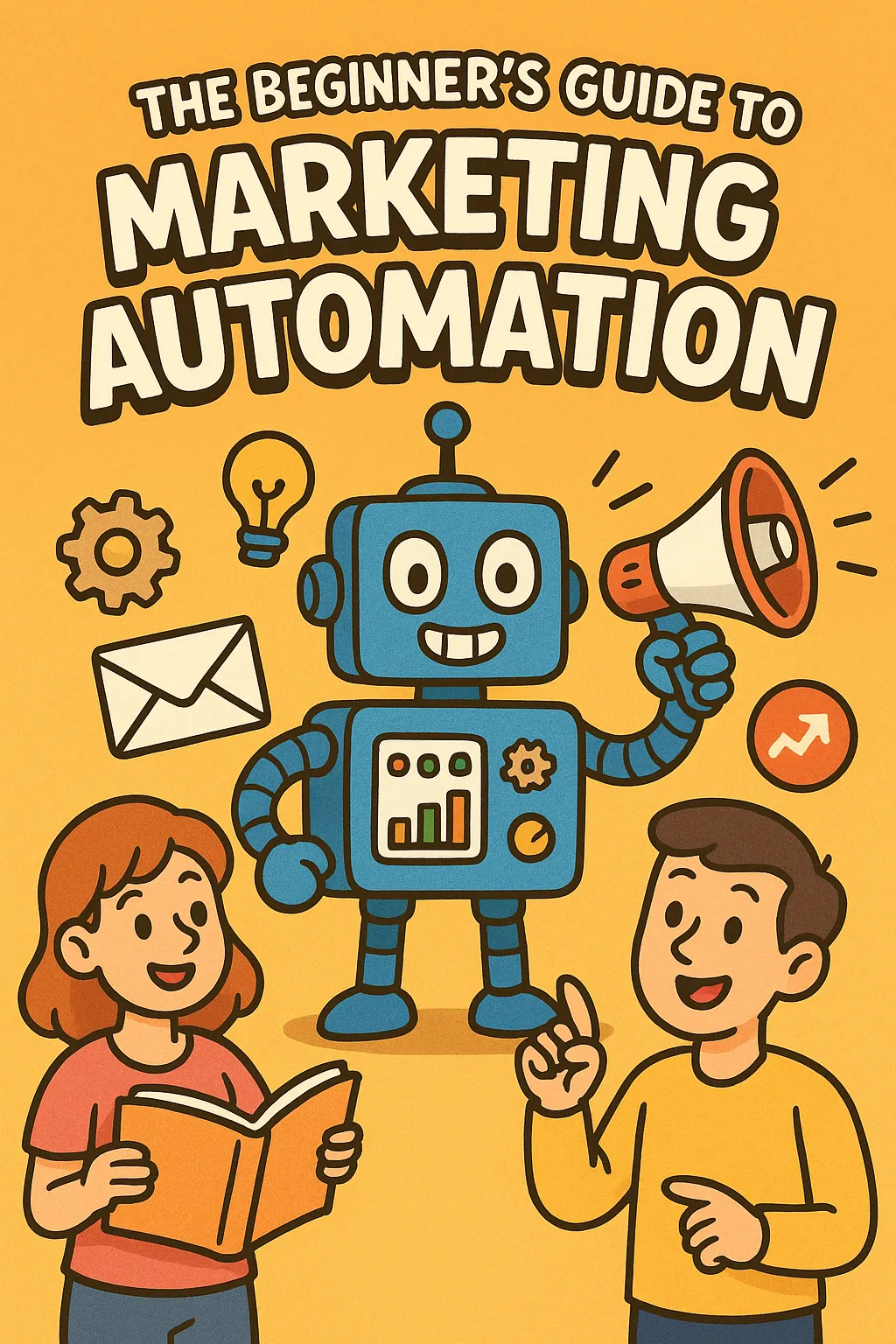
The Beginner’s Guide to Marketing Automation
The Beginner’s Guide to Marketing Automation
Marketing automation can be a game-changer for businesses looking to streamline their processes, save time, and boost efficiency. If you're new to the concept, don’t worry! In this guide, we’ll break down the essentials of marketing automation, why it’s important, and how you can get started.
What is Marketing Automation?
Marketing automation refers to the use of software to automate repetitive marketing tasks. These tasks could include sending emails, social media posting, ad campaigns, lead nurturing, and more. The goal of marketing automation is to free up time for your team to focus on strategy and creativity while ensuring that your customers receive consistent and personalized experiences.
Why Should You Care About Marketing Automation?
Here are a few reasons why marketing automation is becoming increasingly important for businesses:
Efficiency: Automation saves you time by handling repetitive tasks like email marketing, follow-up emails, and social media posts. This lets you focus on higher-level strategic tasks.
Personalization: With automation tools, you can send personalized messages to your audience based on their actions or behavior. This means you can target your marketing efforts more effectively, increasing the chances of conversions.
Consistency: Automated campaigns ensure that your business is always communicating with your customers, even when you’re not actively working. You can maintain regular contact, improving brand awareness and customer loyalty.
Data-Driven Decisions: Marketing automation platforms provide analytics that allow you to track performance, understand customer behavior, and make data-backed decisions for future campaigns.
Types of Marketing Automation
Here are the most common types of marketing automation you’ll encounter:
Email Marketing Automation: Sending personalized emails to customers at the right time based on triggers (like signing up for a newsletter or abandoning a shopping cart).
Social Media Automation: Scheduling and posting content to social media platforms automatically. This helps maintain a consistent social media presence without having to manually post every day.
Lead Nurturing Automation: Automatically moving leads through the sales funnel by sending a series of educational emails, offers, and reminders based on their behavior.
Ad Campaign Automation: Automatically running paid ads across platforms like Google and Facebook with set parameters, targeting specific customer segments.
Getting Started with Marketing Automation
Ready to dive in? Here’s a simple roadmap to get you started with marketing automation:
1. Set Clear Goals
Before automating anything, define your marketing objectives. Are you looking to generate leads, increase sales, or nurture relationships with current customers? Having clear goals will help you select the right tools and create effective campaigns.
2. Choose the Right Tools
There are many marketing automation platforms available, so choosing the right one is crucial. Popular tools include:
HubSpot: Offers a wide range of features for email marketing, lead generation, and customer relationship management.
Mailchimp: Known for its ease of use in email marketing, with automation features to trigger follow-up emails, segmentation, and personalized messages.
ActiveCampaign: A comprehensive platform for email marketing, CRM, and automation with powerful lead scoring capabilities.
Hootsuite: Primarily a social media automation tool, allowing you to schedule posts, track engagement, and analyze results.
Make sure to choose a tool that aligns with your goals, budget, and team size.
3. Start Small
If you’re new to marketing automation, don’t try to automate everything at once. Start with one or two simple tasks, like automating your email campaigns or scheduling social media posts. Gradually scale up as you get more comfortable with the tools.
4. Segment Your Audience
Effective marketing automation relies on segmentation. By grouping your audience based on their behavior, interests, or demographics, you can send more targeted and relevant messages. For example, a customer who has already made a purchase might receive different emails than someone who is still in the research phase.
5. Monitor and Optimize
Once your automated campaigns are live, it’s essential to track their performance. Use the analytics provided by your automation tool to see how well your campaigns are doing. Look for open rates, click-through rates, and conversion rates to gauge success. Optimize your campaigns based on this data.
Common Mistakes to Avoid
Even with marketing automation, it’s easy to make a few missteps. Here are some common mistakes to watch out for:
Over-automation: While automation is great, you don’t want to lose the human touch. Make sure to still engage with customers personally when needed.
Neglecting Customer Segmentation: Sending the same email to everyone will not yield the best results. Make sure you segment your audience based on behavior or interests.
Not Testing: Always test your automated campaigns before launching them. This includes A/B testing subject lines, email copy, and timing.
Final Thoughts
Marketing automation is an essential tool that can help your business save time, improve customer relationships, and scale marketing efforts. Start small, set clear goals, and choose the right tools to set your business up for success.
If you’re looking to dive deeper into marketing automation, consider investing in training or consulting to help you maximize your results. With the right approach, automation will be a powerful ally in growing your business.
Happy automating!
